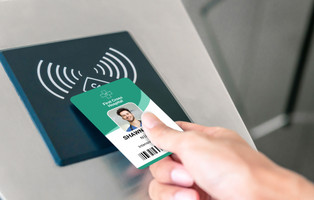Access Control Solutions: The Role of Printed Photo ID Badges in Healthcare
1st Aug 2024
In the healthcare industry, ensuring the safety and security of patients, staff, and sensitive information is paramount. With numerous individuals moving in and out of facilities daily, managing and controlling access is a significant challenge. One effective and widely adopted solution is the use of printed photo ID badges. These badges not only help in identifying individuals but also play a crucial role in access control. In this blog, we will explore the role of printed photo ID badges in healthcare, their benefits, and how they contribute to a secure and efficient environment.
The Importance of Access Control in Healthcare- Access control is a security technique used to regulate who or what can view or use resources in a computing environment. In healthcare, it involves the use of various systems and protocols to ensure that only authorized personnel can access certain areas, equipment, and information. Effective access control is essential for:
- Protecting Patient Privacy: Ensuring that only authorized personnel can access patient records and sensitive information.
- Enhancing Security: Preventing unauthorized individuals from entering restricted areas such as operating rooms, pharmacies, and data centers.
- Improving Safety: Reducing the risk of incidents such as theft, vandalism, or even harm to patients and staff.
The Role of Printed ID Badges- Printed ID badges are a cornerstone of access control solutions in healthcare settings. These badges serve multiple functions, from basic identification to sophisticated access control mechanisms.
1.Identification and Verification- The primary function of an ID badge is to identify and verify the individual wearing it. In a healthcare facility, badges typically include the following information:
- Photo: A clear photograph of the individual for visual identification.
- Name: The individual's full name.
- Role/Department: The person's role (e.g., doctor, nurse, administrative staff) and the department they belong to.
- ID Number: A unique identification number for tracking and administrative purposes.
This information helps staff, patients, and visitors to easily identify authorized personnel, fostering a sense of trust and safety.
2.Access Control- Printed ID badges often incorporate technology such as barcodes, magnetic strips, or RFID (Radio Frequency Identification) chips. These features enable the badges to interact with electronic access control systems. Here's how they work:
- RFID Badges: These badges contain a chip that communicates with RFID readers placed at entry points. When an authorized badge is scanned, the system grants access to the individual.
- Barcode/Magnetic Strip Badges: These badges can be swiped or scanned to allow entry to restricted areas.
By using these technologies, healthcare facilities can control who has access to specific areas, ensuring that only authorized personnel can enter.
3. Time and Attendance Tracking- Another significant role of ID badges is in tracking time and attendance. Healthcare facilities often operate 24/7, and monitoring staff shifts and attendance is crucial for efficient management. ID badges can be integrated with time-tracking systems to:
- Record Entry/Exit Times: Automatically log when staff members enter and exit the facility or specific areas.
- Monitor Shift Changes: Ensure that the right personnel are on duty at the right times.
- Generate Reports: Provide data for payroll, compliance, and performance evaluations.
4. Emergency Response and Management- In emergencies, having a robust identification and access control system can be lifesaving. ID badges can be used to:
- Identify Key Personnel: Quickly identify and locate essential staff members during an emergency.
- Restrict Access: Lockdown specific areas to prevent unauthorized access and ensure the safety of patients and staff.
- Facilitate Evacuations: Use the access control system to guide and manage evacuations efficiently.
Benefits of Printed ID Badges in Healthcare
1. Enhanced Security- By ensuring that only authorized personnel can access sensitive areas and information, printed ID badges significantly enhance the overall security of healthcare facilities. This helps in preventing unauthorized access and potential breaches.
2. Improved Accountability- ID badges create a sense of accountability among staff members. Knowing that their access is monitored, employees are more likely to adhere to protocols and maintain professional conduct.
3. Streamlined Operations- Integrating ID badges with access control and time-tracking systems streamlines various operational processes. This leads to improved efficiency, reduced administrative burden, and better resource management.
4. Increased Patient Trust- When patients see staff members with clearly identifiable ID badges, it builds trust and confidence. Patients can easily verify the identity and role of the individuals providing their care, contributing to a positive experience.
Contact us today
Printed photo ID badges are an essential component of access control solutions in healthcare. They offer a reliable and efficient way to identify, verify, and manage access for staff, patients, and visitors. By incorporating advanced technologies, these badges not only enhance security but also improve operational efficiency and patient trust. As healthcare facilities continue to evolve, the role of printed ID badges in ensuring safety and security will remain indispensable. Contact us today to enhance your ID badging for your healthcare workers.

